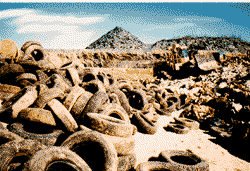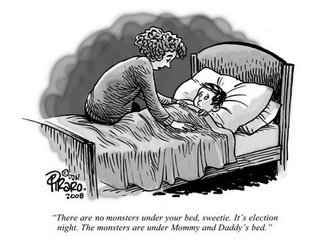Now What? The first time you may run into the idea of Gray Water is in discussions of what to do with the water headed for your cistern when it first starts to rain. This is because that water could be polluted with natures by-products like leaves and dirt but more importantly bird poo, pesticides, and degraded gasoline products.
:}
http://www.motherearthnews.com/Modern-Homesteading/1978-05-01/The-Homestead-Cistern.aspx?page=3
To aid in keeping their collected water clean, most cistern owners install a “shut-off” (or short length of movable pipe) in their systems’ downspouts. Then, during the first few minutes of a rain—when all the soot, bird droppings, etc., that have accumulated on the roof’s surface begin to wash away—the runoff can be diverted away from the cistern. (This tainted water can be shunted to the garden or used in any way you’d use “gray water”.) Shortly afterwards—when it has rained a few minutes and the water flowing through the downspout appears clear and clean—the shut-off can be switched back to direct the remaining portion of the shower or storm into the cistern.
The filter mentioned above is usually nothing more than a concrete enclosure (see diagram) that’s divided into two sections by a partition reaching two-thirds of the way to the chamber’s top. One of the two sections is left empty, while the other is layered full of filtering material(s) . . . usually gravel, fine sand, and/or activated charcoal. The idea is that as water flows from the downspout to the first (i.e., empty) section of the “filter box”, bits of leaves, dirt, etc., will settle out . . . then—as the collected liquid spills over the partition and begins to percolate down through the layers of filtering material—smaller impurities also will be removed. A screen prevents any remaining debris from flowing into the supply line that connects the filter box with the cistern.
:}
Not to get too technical but water is usually divided into Black Water, Grey Water and White or Clean Water. Water is also heavily regulated. It is regulated by people who are interested in drinking water. It is regulated by people who are interested in pollution control. It is regulated by people who are involved in pest and animal control. If you are on an island or in a deeply rural area you only have to worry about your own personal health. If you are in the middle of Chicago, good luck.
But for simple presentations Black Water is what goes down the toilet. Some people use dry chemical toilets and they recycle there own human waste as soil enhancers. This is only for the very hardy right now. Other people use septic tanks to recycle at least the water and some nutrients back into the environment. This can be dicey at times. But hundreds of thousands use these devices. Most people would have to (yes say it) “let that go”.
OK so you have this tank full of rainwater. If you are smart and your storage is up in the air then all you need is a hose attached to it. Then using gravity you can direct that water where you like. If it is stored on the ground you may need a little pump to achieve that end. If your tank is below ground well you need a bigger pump.
Gray water is that water not considered good enough to drink. This is where the legal tussles began. To give an example, some people flush their toilets with spent dish washing water. They use a bucket and pour it in the toilet tank. Other people divert their clothes washing water to their garden by either running a hose there directly or by running the water into a tank. Why do I raise this? Can a person drink the water in your cistern?
For an EXTREMELY spirited discussion of all of this please see:
:}
http://www.greywaterguerrillas.com/
The Greywater Guerrillas are a collaborative group of educators, designers, builders, and artists who educate and empower people to build sustainable water culture and infrastructure.
We teach about sustainable water use through hand-on workshops and presentations.
We recently published the anthology “Dam Nation: Dispatches from the Water Underground”
Available from 100 Fires. Read more about the book.
The politics of water – as this brilliant anthology makes clear – are the politics of human survival. Read this, and believe me, you’ll never flush with the same equanimity again.”
Mike Davis, author of City of Quartz and Dead Cities
A sweeping overview of water use issues. Dam Nation is an accessible and energizing resource for the next generation of activists and radical plumbers.
—Art Ludwig, author of Create an Oasis with Greywater
Dam Nation is a people’s history of water—and the water grid; a detailed accounting of the fallout from a century of Manifest Destiny’s attacks on wild rivers. The book traces how—across five continents—beleaguered commoners block the neoliberal makeover of the world and endeavor to restore balance between humans and watersheds. These strategists and innovators blow open the scarcity myth to show how local democratic control coupled with watershed restoration can provide water for everyone.
 |
Check out dozens of greywater and composting toilet systems. |
:}





